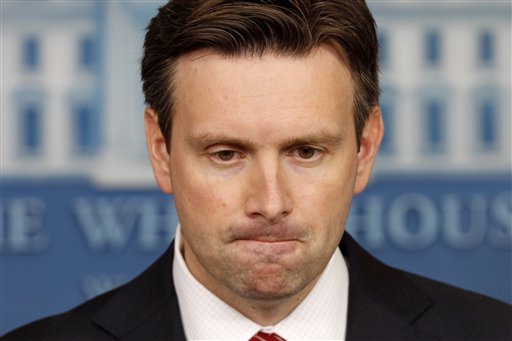More than half of the questions asked at the White House press briefing Friday were about the new Title IX "bathroom law" guidance issued by the Obama administration on Friday.
Of the 54 questions asked during this press briefing, 32, or about 60 percent, were about the new bathroom law.
CNN reported that the administration directed public schools to allow transgender public school students to use bathrooms matching their "gender identity." The letter from the Departments of Education and Justice stressed this was to make sure "transgender students enjoy a supportive and nondiscriminatory school environment."
This comes during the legal battle between the state of North Carolina and the Obama administration over this issue. The saga began when North Carolina Gov. Pat McCrory (R.) signed a law stating if a person wants to use a public restroom, he or she must use the restroom that corresponds with the gender stated on their birth certificate.
The questions circled around the implied threat of loss of federal funds and if this is a fair thing to do to schools. Spokesman Josh Earnest spoke about how there is a way, through established chain of litigation, that the schools who choose not to endorse this can go through.
For instance, CBS reporter Mark Knoller asked Earnest if people should see this guidance letter as an implicit threat to take federal funding away from schools that don't want to comply with Title IX. Earnest responded that this is not how the schools should see this. He stressed that this is in place for the protection of the kids that enter schools, whether it be for their physical safety or their dignity:
MARK KNOLLER: Josh, is it the intention of the Administration that the guidance letter be seen as a threat to deny federal funds to school districts that don't comply with the policy decisions as interpreted by DOE and DOJ?
JOSH EARNEST: No, they should not view it that way. What they should view this as guidance, as specific suggestions, and a framework for dealing with a very straightforward challenge. How do school administrators, all across the country, ensure that they're protecting both the safety and dignity of every single student at the school? It's as simple as that and what the Department of Education has done is they've drawn on their own internal expertise and they've drawn on the creative solutions that have been implemented by school administrators all across the country to put all that good information in one place and provide some practical advice to school administrators who are trying to solve this problem and that's a good thing. I think what is true, what is undeniably true, is the foundation of this guidance is the principle that people shouldn't be discriminated against just because of who they are. And, school administrators don't have a glamorous job. These are individuals who I think, in most cases, feel quite passionate about their work. They view their work as a calling. They're looking to prepare the next generation of Americans to succeed and they want to create a learning environment where every student can feel safe, where every student can feel included, where every student can feel respected. That's what the vast majority of school administrators are interested in and that's why I think that the vast majority of school administrators are going to use this guidance, they're going to carefully consider the suggestions that have been put forward by the Department of Education and they're going to put forward a solution that works in their community. That's the way this should work.
KNOLLER: Could you see how some might see the guidance letter as an implied threat of loss of federal funds being that you mention that under the, you know, under the provisions of Title IX schools that receive federal funds are obligated to comply with the provisions that are stated forth of the guidance letter?
EARNEST: Look, there is a desire in the guidance to be as clear as possible about why this guidance is being issued. But, look our– it's quite clear what we're interested in here. That the Department of Education is interested in providing guidance and suggestions to school administrators who are trying to do the right thing and that right thing is to prevent people from being discriminated against, but also make sure that every single student in their school has their safety and their dignity protected.
